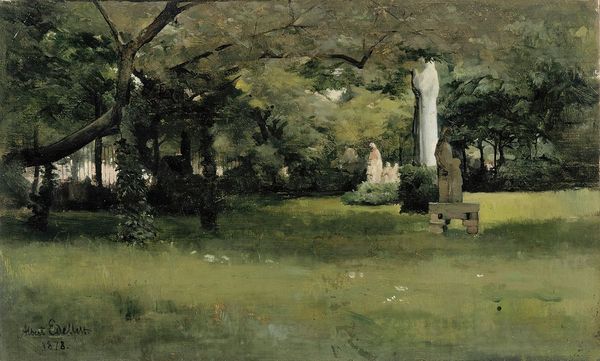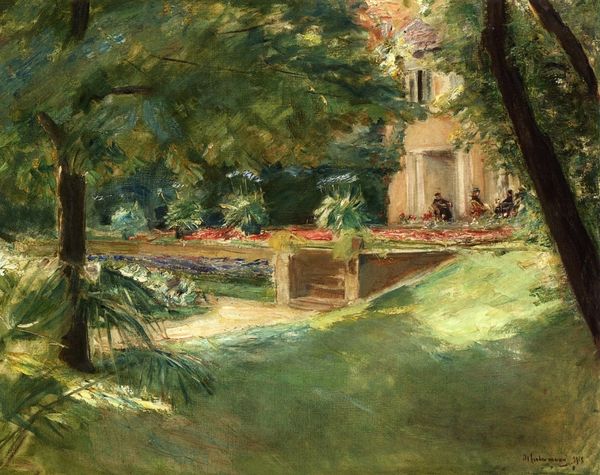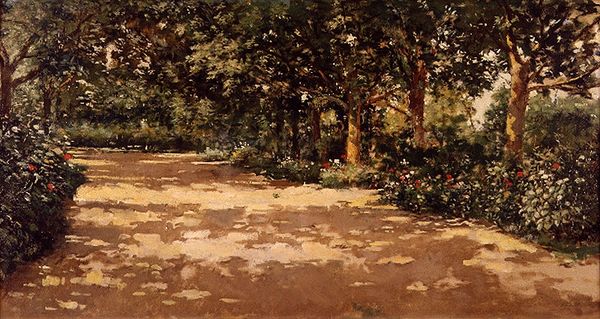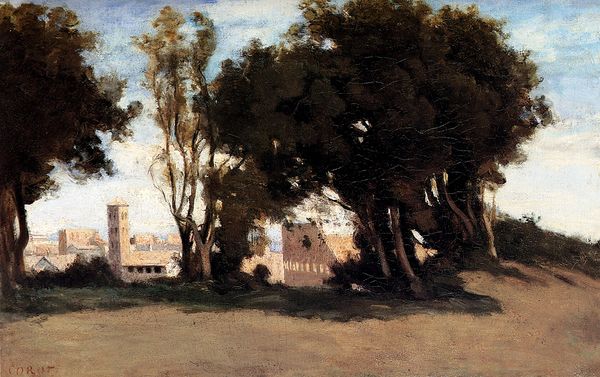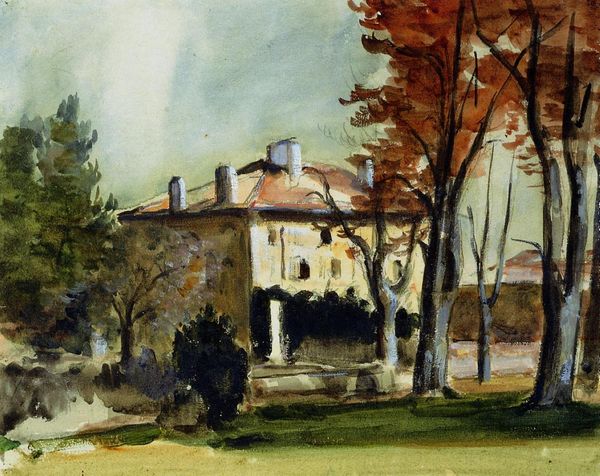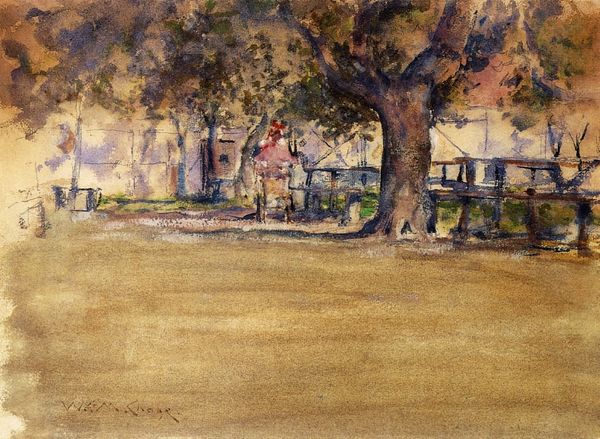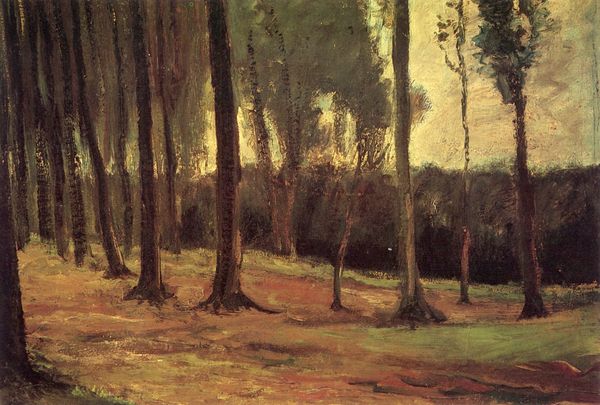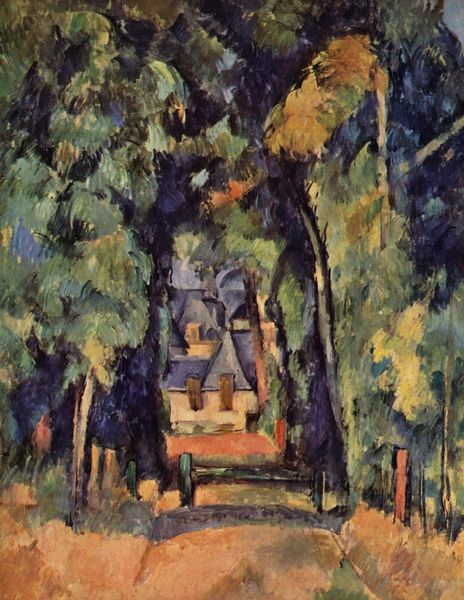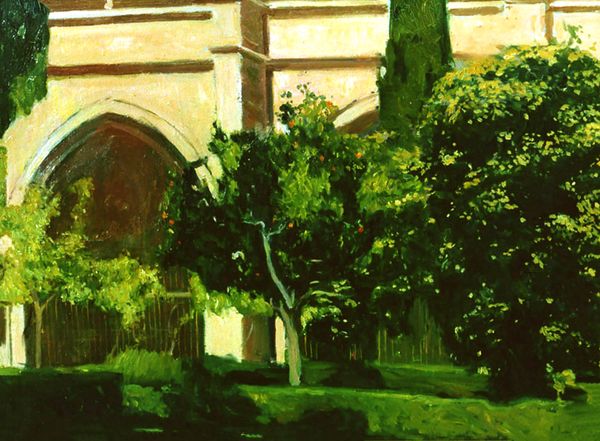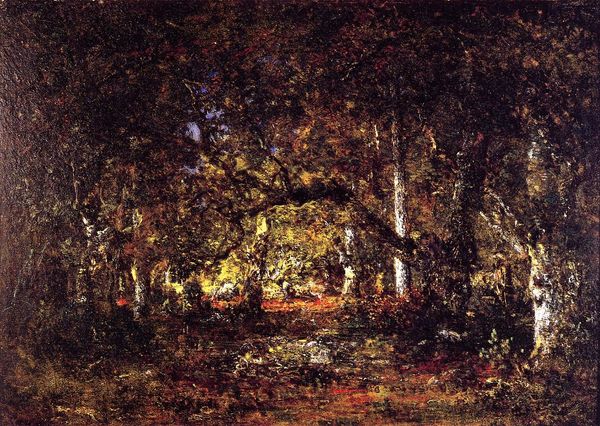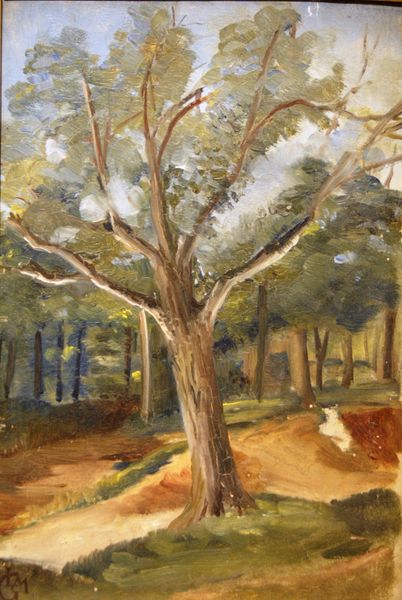
plein-air, oil-paint
#
impressionism
#
plein-air
#
oil-paint
#
landscape
#
impressionist landscape
#
oil painting
#
natural-landscape
#
cityscape
#
realism
Copyright: Public domain
Curator: "Churchyard at Shillingstone," painted in 1884 by Tom Roberts, presents a fascinating snapshot into the development of Australian Impressionism and its connection to broader European movements. The painting is a delightful oil on canvas piece. Editor: Oh, wow, there's such a brooding, pensive feel. I mean, look at that massive tree looming over the gravestones! It's like nature itself is mourning. The colour palette is wonderfully sombre. Curator: Absolutely, and the work showcases plein-air painting, the technique of painting outdoors that was central to the Impressionists. But, looking deeper, the scene could also represent anxieties around mortality, perhaps reflecting the social conditions of the time and a collective contemplation of death within the Victorian era. We can't ignore the historical context of Roberts’ own social positioning. Editor: Mortality for sure, but for me it's the light – how it catches on the path and that little section of church wall is captivating. It also feels deeply personal to me, as if I were taking a nostalgic walk through a memory or a familiar location of my childhood. I can almost smell the damp earth and the moss on the stones. Curator: The juxtaposition of the rough brushstrokes with the implied somber mood makes one think about how notions of beauty are constantly in flux and directly shaped by dominant social and historical narratives. The location being an English churchyard brings additional context, evoking imperial ideologies related to land, ownership and belonging, which obviously plays a part in Australian national identity as well. Editor: I agree, though maybe I resist interpreting this image through that heavy a theoretical lens because of my visceral emotional response to the atmosphere in it. The tree's dominance also says a lot to me – even though a Church stands at one side, nature ultimately triumphs. Death and new life, side by side. The eternal circle! Curator: Yes, it's not just a simple depiction. These impressions really underline how seemingly simple depictions of nature carry incredibly layered social and political contexts. Editor: Definitely, and for me that simple depiction of place carries my own memories too; how art is supposed to work, perhaps. It is evocative.
Comments
No comments
Be the first to comment and join the conversation on the ultimate creative platform.


